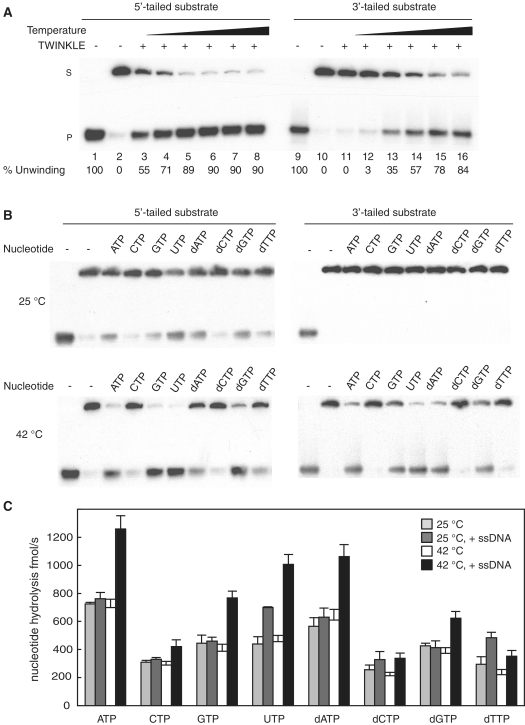Figure 3.
TWINKLE unwinding of a closed circular template is stimulated at higher temperatures. (A) The helicase activity of TWINKLE (300 fmol) was monitored using the 5′-tailed substrate (lanes 1–8) or the 3′-tailed substrate (lanes 9–16) in the presence of 3 mM UTP and at increasing temperatures (20°C, 25°C, 32°C, 37°C, 41°C and 45°C). After 45 min of incubation at the indicated temperature, the reaction products were separated on a 12.5% non-denaturating polyacrylamide gel. Lanes 1 and 9, DNA substrates heated at 100°C before loading; lanes 2 and 10, DNA substrate incubated at 45°C in the absence of TWINKLE; S, double-stranded substrate; P, single-stranded product. (B) Helicase assays were performed using the 5′-tailed or the 3′-tailed substrates in the presence of 200 fmol of TWINKLE and 3 mM of the indicated nucleotide at 25°C (upper panel) or at 42°C (lower panel). (C) Hydrolysis of different nucleotides by TWINKLE were measured as described in ‘Materials and Methods’ section. The reactions were performed in the presence of 200 fmol of TWINKLE, 0.5 mM of the indicated nucleotide, and in the absence (light gray and white blocks) or presence (dark gray and black bars) of M13ssDNA (188 fmol) at 25°C (light and dark gray bars) or at 42°C (white and black bars).

